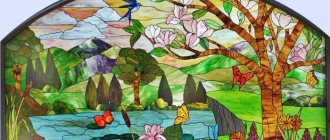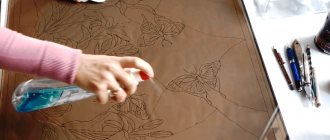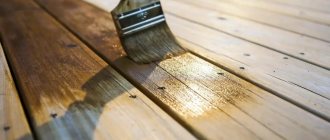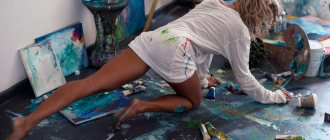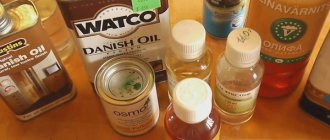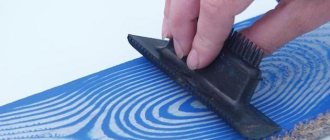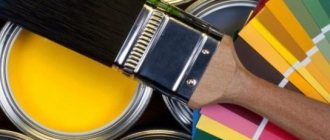What techniques and techniques are there for painting with watercolors? I talk about unconventional, complex and simple watercolor techniques for beginners.
Watercolor is a paint whose main component is water. It is the dilution of this paint with water that helps achieve the very different effects and techniques that watercolor artists use.
In general, watercolor as a paint has been known to the world since the times of ancient Egypt and China. And if in the ancient world writing with watercolors was classified as graphics, then painting with watercolors, as we know it now, began to take shape in the 18th century. Artists of the time separated it from traditional oil painting and proclaimed it one of the most difficult techniques a painter could master.
Over time, the peculiarities of working with watercolor paints began to be studied more, new techniques appeared, artists began to experiment with watercolors and other materials and methods of drawing. Many new and interesting techniques have appeared, and therefore, scope for creativity.
“Watercolor for Beginners” course in my online school, you can learn how to work with this paint and learn all the basic techniques and techniques that an artist needs to know to work.
And in this article we will also look at both the basic techniques and the less common and obvious ones, but no less interesting. Read this article to the end to find out what watercolor techniques artists use, what the wet technique is, and much more.
First, let's look at a few basic watercolor painting techniques, and then move on to mixed media.
Artist's kit - components
To learn to draw, you cannot do without paints. It’s better to buy high-quality paints right away, because too cheap paints adhere worse, and therefore the learning process will be less productive. A beginner should not spend money on a professional set: to start drawing from scratch, all you need is basic colors:
- titanium white;
- yellow (lemon, medium yellow, yellow ocher);
- red (carmine, cadmium);
- blue;
- emerald and light green;
- black.
It is easiest to work with gouache, but an adult or schoolchild can easily cope with watercolor. The ideal option is not an ordinary children's one, but a watercolor for artists, which is of the best quality. Budget sets of 24 colors cost 400-500 rubles. In principle, five tones (red, blue, yellow, white, black) are enough for an artist, and the rest can be created by mixing. To combine paints, you need to immediately buy a palette. The shape and material can be any. There are round, oval, square palettes, wood and plastic products on sale. The size of the palette is also left to the user’s choice.
It is equally important to choose a good brush. For beginners, three brushes of different sizes are enough. You can also additionally buy a thin brush for making dotted drawings and small details. The most popular are squirrel brushes - they absorb water well, release it longer, and therefore paint without spots or streaks. This brush is good for glazing or creating clear contours.
A kolinsky brush – round, with a sharp tip – is also suitable for a novice artist. It is also convenient for working out thin contours and elegant details using the technique of painting with watercolors. The kit must include a flat, wide brush for filling. It is used to create a background or stripes over a large area of canvas or sheet of paper. Over time, fan, linear, and retouching brushes are usually added to the collection of brushes. It is important to inspect the brushes for the reliability of the connection between the bristles and the handle - it should be very strong.
Other accessories in the artist's kit:
- Paper. For watercolor paints, you should buy special paper with low absorption, which will not allow water to wet the sheet before it is completely dry. On plain printer paper, watercolors tend to bleed. The best option is hot-pressed paper; it additionally has a very smooth surface.
- Thinners. Special solvents will be required to dilute oil paints. Typically, linseed oil or turpentine is used for this. It is not recommended to use organic solvents - they spoil the structure of oil paint and remove the beautiful shine. However, to clean paint from brushes you need to buy turpentine and white spirit.
- Canvas. Typically used for painting with oils or acrylics. The stores have ready-made canvases on stretchers made of linen, cotton, and synthetics. Natural fabrics are dense, sag little, and patterns look more beautiful on them. You can also make your own canvas. To do this, you need to buy a stretcher, cover it with fabric, and then prime it. As the primer dries, drag the canvas a little tighter.
- Easel. It is recommended to purchase it if you plan to take up drawing seriously. The easel is placed at eye level, which gives an excellent overview of the painting, helps to work correctly and quickly look for flaws. For small canvases, mini easels are available for sale.
- Protective varnish. It is advisable to coat the painting with varnish, this will help protect it from ultraviolet radiation and make the colors richer.
Also, to create an artist’s kit, you need to buy jars for brushes, wet wipes, and cotton rags. To work with oil, you will need a palette knife - a spatula for thick paint, removing dried material and applying beautiful strokes. It is also worth buying oil cans with clips (single or double) that contain paint and are easily attached to the palette.
Drawing courses for children
Keep in mind that your child needs time to understand whether he likes drawing. Maybe he is a natural skier, and you are an artist!
Do not rush to enroll your child in academic drawing courses, where they will boringly explain to him what perspective is and will force him to draw the same ball over and over again.
Check out the programs of children's art studios: let your child playfully do what he loves, draw blots and fluffy blue elephants! Gradually they will tell him and show him how to draw correctly and will not discourage him from further developing in this direction. In addition, drawing perfectly develops fine motor skills and children's imagination.
When you have already realized that your child has talent and likes to draw, feel free to take him to a more serious art school.
The total duration of courses for children is usually the same as for adults, but the classes themselves can be shorter so as not to overtire the child - one or one and a half astronomical hours is enough.
The cost of children's courses is slightly cheaper and starts in the price category from 2,000 rubles .
Pay attention to the teacher - he should not only draw well himself, but also be able to explain to children why we draw the sun this way and the rabbit that way. The entire learning process should be built from simple to complex.
Have you bought your watercolor paints yet? Are you ready to conquer artistic heights? Now you are savvy in theory, all you need to do is try it! Don't be afraid of mistakes, because nothing will work out in drawing without practice.
Watercolor painting techniques
You need to learn different drawing methods step by step, moving from the easiest to the most complex. At first, most artists use sketching, then they begin to show imagination and create their own masterpieces. It is recommended to start learning to work with watercolors with the techniques described below.
Painting with a flat brush
If the drawing is invented, you should follow these steps step by step:
- Draw a square or rectangle to indicate the beginning and end of the layer. Use a dark shade to draw a thin line from the top left corner to the top right corner.
- Wet the brush with watercolor. Make the second stroke from the bottom edge of the first line, covering the paint that has accumulated below. You need to work quickly to avoid watercolor drips, or carefully wipe them off with a cloth.
- Repeat this action again with the next line. It is better to use the flat edge of the brush for strokes, which will make the bottom of the stroke smoother. Intermittent strokes must be re-drawn immediately.
- Completely fill in the outlined outline, repeating the steps in the same way. It is important to maintain an even tone of paint and not change the brand of watercolor. On paper that is too thick, the strokes may be uneven. Then it is recommended to lightly sprinkle the sheet with water, blot it, let it dry, and only then start drawing.
At the end of the work, you need to rinse the brush, squeeze it dry, and use it to remove all clumps of paint at the bottom of the last stroke, avoiding discoloration of the drawing. To give the picture some texture, you can leave it to dry on an angle.
Gradient
First, you also need to work out a square or rectangle (in the future this will be the drawing required by the artist). Then you should take the following steps:
- dip the brush in a dark shade of the required color, draw a vertical or horizontal stroke;
- wipe the brush with a cloth or paper napkin, dip it in a lighter shade of the same color, draw a stroke overlapping part of the previous one;
- rinse, wipe the brush, make another stroke (lighter, darker or a completely different color);
- repeat until the figure is filled;
- rinse the brush, dry it, pick up the remaining paint.
Using a gradient, you can create very interesting transitions that form the basis of a future painting.
Watercolor glaze
The glaze technique requires the artist’s imagination; with its help, landscapes, images of autumn and summer, and landscapes come out well. Description of the technique using the example of a landscape:
- paint the sky above and the river below using blue watercolors;
- dilute the paint with water, draw a waterfall;
- make pink clouds in the sky;
- decorate the bottom of the picture and the mountain in yellow;
- let all layers dry thoroughly;
- use dark blue to shade the horizon of the mountain and its top, and you can also use it to beautifully decorate a waterfall;
- make the banks of the river orange, shade the sky a little;
- as the drawing dries, draw bubbles on the waterfall in purple;
- you can draw trees along the banks of the river - trunks in brown, leaves in green;
- tint the sky and water blue;
- Draw the grass in blue and green;
- you can depict trees and fruits under them.
The point of glazing is that all layers of paint interact with each other, overlap one another and, when overlapped, give even more interesting effects.
"Wet" technique
Before drawing, you need to moisten a sheet of paper with water. Of course, you need paper that is thick and does not sag. Wetting is done using a sponge, having previously wrung it out. The moisture should be evenly distributed over the sheet and not shiny, otherwise there will be too much water on it.
Next, you can make any drawing on paper, for example, an autumn bouquet:
- first draw the background, choosing any light shade;
- draw a vase;
- draw leaves in a vase using yellow, red, orange;
- Apply each new shade after the previous one has partially dried, the blurriness of the lines creates very interesting effects;
- at the end of the work, you can place accents using brown, dark brown, burgundy, and create shadows;
- Use a wet, clean brush to blur the edges a little, but do not overdo it to avoid the sloppy appearance of the drawing.
You should not combine cold and warm tones in one drawing, this will create visual dissonance.
Dry brush painting
It is not difficult to draw using this technique. You need to take the paint on a dry brush, then make a stroke on paper. It is recommended to first sketch in pencil. At first, the sketches will be quite rough - for example, the outlines of the sky, trunks and branches of trees, a river. After the first layer has dried, details are added, shadows are created, and texture is drawn. Then they create a background around it and place the necessary accents.
When drawing, you need to change the pressure on the brush, which will allow you to add or remove texture. It is important that the brush does not remain too wet after rinsing and blotting. Otherwise, the paint will not give a textured effect and will look flat.
No excess moisture
The technique is well suited for drawing clouds and streams of light. Before you start, you need to prepare several sponges or facial sponges. First, strokes are made with a dry or wet brush, then they are rubbed with sponges. It is important not to rub the sheet too hard to avoid damaging the paper. Highlights can be done with paper towels. Afterwards, if necessary, the contours of the drawings and accents are drawn with a thin dry brush.
Discoloration of dried paint
In this case, the already dried drawing is lightened. The desired areas need to be moistened with a cloth and gently wiped with a dry brush. It's best to use brushes with stiff bristles that can scrape up a bit of the paint. Actions must be careful, otherwise there is a risk of damaging the paper. Instead of using a cloth, it is permissible to spray the paper with a spray bottle, and then moisten the moisture with a paper towel. Another option is to carefully rub the design with sandpaper, then you do not need to wet it first.
How to paint a landscape in watercolor?
After you've practiced drawing individual elements, try taking on something more complex.
Nature is the best inspiration for an artist. Why not capture nature on paper then?
To draw a simple landscape, follow these 5 simple steps:
Step 1. Select paper of the right size and brushes that will be comfortable for you to paint with. Choose the main colors that will be present in the landscape.
Step 2: At this point, create a pencil sketch. Do not draw out all the details, just indicate the location of the objects.
Don't press too hard on the pencil. The lines should be barely visible so that the watercolor will hide them.
Step 3: Apply primary background colors: Paint the sky, ground, water or plants with primary colors.
Step 4: Add detail and shade to existing elements. Add clouds to the sky, draw foliage on the trees, make highlights on the water.
Step 5. Work on very small details, if necessary, and correct visible defects.
Voila! If you do everything step by step, no matter what you draw, you will end up with a masterpiece.
What could be more beautiful than a sunset in the mountains? Catch a detailed video with step-by-step drawing of a bright evening landscape:
Gouache for beginners
It is usually recommended to learn to draw with gouache in childhood - from 4-6 years old. It is very easy to apply, does not float, and is much easier to work with than watercolor. Gouache drawings can be very diverse - nature, animals, flowers and trees, fruits, etc. Adults paint real landscapes with gouache.
You can make drawings not only on paper, but also on canvas, plywood, wood, fabric, even on stones and pebbles. For this purpose, it is better to purchase not children's gouache, but artistic gouache, which is of high quality. First, a pencil sketch is made, then it is painted over. Start with dark colors, gradually moving to light ones. You need to mix paints taking into account the color wheel, otherwise the result will be a gray tone.
Drawing courses
Learning to paint with watercolors on your own is interesting, but terribly time consuming! When there is an experienced artist nearby who will help you see and correct mistakes, things will go much faster.
How to choose drawing courses so that they are effective and you do not waste your money? Answer yourself the question: “Why do I want to learn how to draw?”
If you are determined and want to reach the level of at least Michelangelo in order to enter a university or paint professionally, pay attention to academic drawing courses.
Start by studying the program. What does the school want to offer you? Do you find it too easy or too difficult for your level?
Often, art schools break classes into thematic units such as “Fundamentals of Head Drawing” or “Tone Drawing.” On average, such blocks can last from 14 to 72 academic hours .
The cost will also be different: from 3,000 to 10,000 rubles .
If you are more interested in drawing as a hobby or want to master one or two techniques, pay attention to master classes. In a short period of time (2-6 hours), they will explain to you the basics of drawing in one technique or another and tell you step by step how to draw a picture that you will create right there in the lesson.
The cost of master classes depends on the school and teacher and starts from 2,000 rubles .
Look at reviews of the school you have chosen. Pay attention to what students say about the general atmosphere.
Drawing under stress is very difficult, because this is an activity for which you need to free your head and give free rein to your emotions and imagination.
Features of oil paints
Experienced artists greatly value oil paints, which are available in a wide range in specialized stores. The paints contain minerals, organic and synthetic components. They are diluted not with water, but with linseed oil, which gives brightness and richness of tone. Paints take a long time to dry, but the design can be adjusted over a period of time. To dilute dried, thickened paint, a special oil is also used, which is sold in art departments.
Types of oil paints
There are three types of oil paints:
- Highly artistic. They are usually used for professional painting. The price of the material is high due to the excellent quality of the components. For decades, paints do not lose color or fade.
- Sketchy. Suitable for beginners, inexpensive, can be used in different techniques.
- Studio. They have an intermediate price between the two listed options and are suitable for artists and beginners.
Oil paints can also be transparent or opaque. The latter are denser and do not allow light to pass through. If the packaging is o, such material is very durable and lasts a long time. The more stars, the higher the quality of the paint.
Rules and techniques of drawing
The oil painting looks very beautiful. Each stroke looks on its own, although achieving such an effect is quite difficult. There are two main techniques: one coating (alla prima) and several layers. To apply multi-layer paints, you will have to try - work quickly, do not dilute the material, know its properties and how one tone will look on top of the second. Oil consumption for multi-layer application is usually large.
A single-layer pattern has its disadvantages. So, over time, brushstrokes can crack due to paint shrinking, so most professionals dry the first coat and apply at least one more. This way material costs can be reduced.
Recommendations when working with oil:
- the lighting must be good, otherwise there is a risk of creating unnecessary shadows in the drawing;
- First you need to draw a contour, then apply oil strokes along the lines;
- colors can be mixed, knowing the basic principles of combining tones;
- Usually they paint pictures starting with bright elements, highlighting the darkest and lightest points;
- after completing the sketch, outline the contours and details, make the necessary accents;
- the finished painting should be allowed to dry for three days, but on the second day you can make some edits;
- After drying, the canvas should not be rubbed or touched with hands.
Coloring children's coloring books with paints
Children's coloring books are the first pictures on which any child can try to draw. And starting from 2-3 or 3-4 years old, as soon as the child’s hand gets stronger and he can hold a brush, then parents should offer him this type of creativity.
But what is coloring, what benefits does it provide, and what type should you choose for painting?
A coloring book is a book, page, notebook or other object with outline drawings. The images inside the outline are white and the child’s task is to turn them into colors.
This is why the main benefit for children when using coloring books is to introduce them to colors. But besides this, such coloring helps the child in the following:
- Recognize the shapes of objects;
- Master the filling of elements;
- Practice working with a brush;
- Receive information about the world around you;
- Concentrate on the image;
- Develop color perception;
- Develop imagination.
And in general, thanks to coloring books, young children begin to become familiar with the art of painting.
It’s easy to paint on pictures with contours. But the main thing for parents is to choose the right coloring books. And the choice will depend on the following points that are important for children:
- Large details - it is difficult for children of primary preschool age to practice coloring small images; they prefer to color large ones. But with age, it will be advisable to reduce details in order to improve artistic abilities;
- Wide contour - you should choose a bright and thick contour line, then it will not be difficult for the child to hide his mistakes when coloring with an inept pen;
- Smoothness of outlines - with a brush with paints it is easier to repeat simple curves;
- Recognizable images - it is easier for children to color scenes and characters that interest them. So, boys love cars, and girls love fairies, so you should select images based on children’s preferences;
- Thickness of the base - you can paint with paints only on a surface that does not get wet, so, for example, you need to choose coloring on thick paper.
By observing these points, children will be able to learn how to color from scratch under adult supervision.
In addition, parents can not only buy the coloring books they need to work with paints, but also create them themselves by drawing a contour drawing on thick paper.
And it’s very easy to do, just watch a couple of scenes in the video:
How to paint with acrylic correctly: tips for beginners
Acrylic paints combine the properties of oil and watercolor; they do not fade and are not afraid of water. You can apply layers directly on top of the previous ones without waiting for them to dry. To begin with, it is better to buy a set of 6 colors, then expand to 18. You should paint with acrylic on paper, canvas, fabric, glass, plastic, stones. Dilute the paint with water and solvents. The following techniques are used:
- dry – on paper, canvas;
- wet - on a dampened canvas;
- glazing - applying a thick layer and then shading it;
- impasto - painting with clearly distinguishable strokes.
To give the drawing a complete look, you can apply individual strokes with felt-tip pens, markers, pencils, and pastels. First they do simple pictures, then they move on to still lifes, views from the window, and portraits. For learning, it will be useful to use the abstraction technique - making spots and adding details, giving them an image.
Tips for working with acrylic are:
- You should have a spray of water nearby to wet the quick-drying paints;
- by adding water, you can make a more transparent material from acrylic paint;
- Do not add too much water; after drying, the paint may crumble;
- Before wetting the brush in paint, you need to dry it;
- adding a solvent rather than water will help slow down the drying of the material;
- To preserve the design, it is coated with varnish.
Drawings on fabric
It is quite difficult to make fabric drawings; it is better to practice on a different basis. If you have experience, it is quite possible to paint on silk, synthetics, and natural fabrics. First, the fabric needs to be washed, ironed, stretched over a frame or placed on a flat base. Place oilcloth under the fabric and make a drawing with a special felt-tip pen for fabric. Then do artistic painting. The easiest way is to work using ready-made stencils, but you can make a drawing yourself. After a day of drying, you need to iron the product, after 2 days it can be washed.
Paintings on canvas
For acrylic, canvas is the ideal base. The paints must be prepared in advance and diluted with water. If mixing is planned, it is better to use a special solvent, otherwise the material will dry out quickly. The palette should be periodically sprayed with water. They begin to draw the largest details, and as they draw smaller lines, change the brushes to thin ones. The norm for diluting paints with water to create more transparent tones is less than 20%.
Drawings on paper
It’s worth trying drawing on paper for the first time. Since the structure of the paints is dense (it is, in fact, liquid plastic), ordinary thin paper will not work. It is better to take cardboard or special thick paper. Drawings can also be done on paper wallpaper that is already pasted on the walls. This is a popular design technique that allows you to decorate a plain material and give the room an original look.
Glass painting
Pictures on glass look very beautiful, reminiscent of finished stained glass. The outlines of the future drawing are made with a thin marker according to the sketch, which is placed under the glass. Afterwards, paint is applied in layers, forming the desired color combinations, accents, lighter and darker areas. At the end of the work, acrylic varnish is applied to the painting.
Colors give endless scope for imagination. Learning to draw is not difficult. Even without talent, you can make beautiful drawings with enough diligence and perseverance.
Stage-by-stage painting
How to paint with paints step by step? In painting there are certain rules for how to work. There are several methods that artists use to create their work.
- From dark to light. The revelation of the work begins with the shadows. This way you immediately identify the darkest areas.
- From light to dark. You are gradually condensing the work and moving from the lightest areas to the shadows.
- Underpainting. This principle implies the disclosure of all color-tonal relationships before the start of the main color elaboration. You cover the entire work with light translucent paints, and then proceed to the main painting stage. Underpainting helps avoid confusion in color relationships and tone.
Also, depending on the work, artists can use certain techniques that can affect the final color of the painting: this can be a colored primer or a brush drawing (grisaille).
Appetizing apple
It’s easier to draw from photos or ready-made pictures for sketching in watercolors. Such images do not move, and the lighting in them remains unchanged at any time of the day.
Try to view the apple as an object that has a certain shape and consists of several colors and shadows. It's oval. At the top and bottom, the oval line is slightly distorted. The right side, exposed to the rays of the sun, is red, ruddy, and the left side is green. The dimple in place of the stalk, which is less illuminated, also remains green.
The sun falls on our apple from the right side (it should have light highlights on this side and in the upper part). In the center (see photo) the light is scattered, and a shadow is formed in the lower left part. It is present in smaller quantities in the upper part and on the left side.
You can paint such an apple easily and beautifully in a few minutes. Let's start with a sketch. You can do it with a pencil with thin, unnoticeable strokes. It is better for gouache to lie on wet paper, so before you paint a watercolor drawing, it is better to moisten it a little first. The first layer, the base one, we will paint with only two light colors, green and red. Add some red and green specks to the top of the apple. It is better to “stretch” the colors with a light touch of the brush.
The paper must be dried before applying the second layer of watercolor. Let's complicate the image a little by adding red to the right side of the middle tone. Paint the left side with a mixture of green and brown. We will not fill in the highlights (light spots) with paint, but will simply bypass them.
But the beautiful watercolor painting is not ready yet. Need to add shadows. To make the drawing look convincing, make them a little darker than in the photo. Most often they are painted black. But on our apple the shadows are rather dark purple, so we use dark purple to create them. Last we will draw the stalk and other small details.
